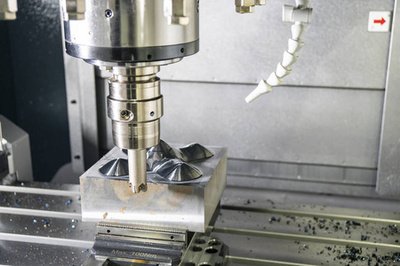Mold
In industrial production, various molds and tools are used to obtain the required products by injection molding, blow molding, extrusion, die casting or forging molding, smelting, stamping and other methods. In short, the mold is a tool used to make molded objects. This tool is composed of various parts, and different molds are composed of different parts. It mainly realizes the processing of the shape of the object by changing the physical state of the molded material.

The effect of mold temperature on product appearance
Higher temperature can improve the fluidity of the resin, which usually makes the surface of the part smooth and shiny, especially improving the surface beauty of glass fiber reinforced resin parts. At the same time, it also improves the strength and appearance of the fusion line.
For the etched surface, if the mold temperature is low, it is difficult for the melt to fill the root of the texture, making the surface of the product appear shiny, and the real texture of the mold surface cannot be "transferred". After increasing the mold temperature and material temperature, the surface of the product can get an ideal etched effect

Impact on the internal stress of products
The formation of molding internal stress is basically caused by different thermal shrinkage rates during cooling. After the product is molded, its cooling gradually extends from the surface to the inside. The surface shrinks and hardens first, and then gradually to the inside. In this process, internal stress is generated due to the difference in shrinkage speed.
When the residual internal stress in the plastic part is higher than the elastic limit of the resin, or under the erosion of a certain chemical environment, cracks will appear on the surface of the plastic part. Studies on PC and PMMA transparent resins show that the residual internal stress is in a compressed form on the surface layer and in a tensile form on the inner layer.
The surface compressive stress depends on its surface cooling condition. The cold mold causes the molten resin to cool down rapidly, resulting in higher residual internal stress in the molded product. Mold temperature is the basic condition for controlling internal stress. A slight change in mold temperature will have a great change in its residual internal stress. Generally speaking, the acceptable internal stress of each product and resin has its lower mold temperature limit. When molding thin walls or longer flow distances, the mold temperature should be higher than the lower limit during general molding.

Product warping
If the cooling system of the mold is not designed properly or the mold temperature is not properly controlled, the plastic part will not be cooled enough, which will cause the plastic part to warp and deform.
For the control of mold temperature, the temperature difference between the male mold and the female mold, the mold core and the mold wall, and the mold wall and the insert should be determined according to the structural characteristics of the product, so as to use the different cooling and shrinkage speeds of each part of the mold to control the characteristics that the plastic part tends to bend in the pulling direction of the higher temperature side after demolding to offset the orientation shrinkage difference and avoid the plastic part from warping and deforming according to the orientation law.
For plastic parts with completely symmetrical body structures, the mold temperature should be kept consistent to ensure balanced cooling of each part of the plastic part.

Affecting the shrinkage rate of products
Low mold temperature accelerates the "freezing orientation" of molecules, increases the thickness of the frozen layer of the melt in the mold cavity, and at the same time, low mold temperature hinders the growth of crystallization, thereby reducing the molding shrinkage rate of the product. On the contrary, if the mold temperature is high, the melt cools slowly, the relaxation time is long, the orientation level is low, and it is conducive to crystallization, and the actual shrinkage rate of the product is large.

Impact on the heat deformation temperature of products
Especially for crystalline plastics, if the product is molded at a lower mold temperature, the orientation and crystallization of the molecules are instantly frozen. When in a higher temperature use environment or secondary processing conditions, its molecular chain will partially rearrange and crystallize, causing the product to deform at even much lower than the heat deformation temperature (HDT) of the material.
The correct approach is to use the recommended mold temperature close to its crystallization temperature to produce, so that the product can be fully crystallized during the injection molding stage, avoiding post-crystallization and post-shrinkage in a high temperature environment.
mold temperature is one of the basic control parameters in the injection molding process, and it is also a factor to be considered in mold design. Its impact on the molding, secondary processing and use of products cannot be underestimated.